REEL RETRO CINEMA: New looks at old flicks — and their comics connections…

By ROB KELLY
The provocatively titled How to Murder Your Wife stars the legendary Jack Lemmon as Stanley Ford, writer/artist of Bash Brannigan, a successful daily comic strip.
How successful? Besides paying for his lavishly furnished, three-story apartment building in the middle of Manhattan, Stanley has the time and resources to stage dramatic scenarios featuring scantily clad dames and gun-toting bad guys all around the city, which are then photographed by his butler (yes, you read that right—the cartoonist has a butler) so Stanley can use them as reference for his strip.
In addition to all that, Stanley is a member of an exclusive men’s club, where various captains of industry sit around, drink, play pool and commiserate with one another how much women can ruin your life, if you let them. Stanley is a confirmed bachelor—that is, until the guys throw one of their own a bachelor party, and Stanley gets so drunk, he wakes up the next morning with a ring on his finger and a naked woman in his bed.
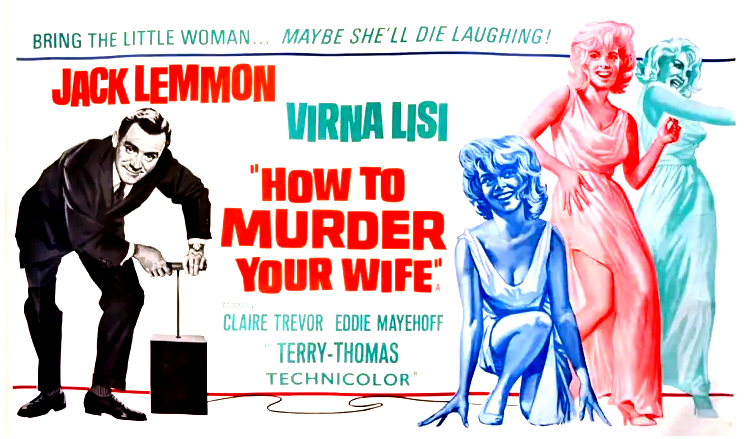
The woman in question (the beautiful Virna Lisi) was hired to jump out of a cake at the party, and that’s pretty much all Stanley can remember. It doesn’t help that the newly christened Mrs. Ford only speaks Italian, so Stanley has to go through his lawyer’s wife (Claire Trevor) to find out whom he just married. His lawyer (Eddie Mayehoff) is no help, saying Stanley won’t be granted a divorce without some legal justification.
Despite his new wife being a fun, affectionate, supportive person (in addition to being a marvelous cook), Stanley has never been unhappier. His butler (Terry-Thomas) refuses to work for a married couple, and quits. Stanley begins to feel so constrained that he changes Bash Brannigan from an adventure strip to a domestic comedy called The Brannigans. But, much to Stanley’s dismay, that makes it even more popular, since now women read the strip, too.
Taking his frustrations out in panel form, he has Bash Branningan plot to murder his wife so he can back to his secret agent ways. His wife sees this (and Stanley’s attempts to play act the murder, using a mannequin and some equipment at the construction site next door) and leaves for Italy without telling him. The strips are published and, with the news that Ford’s wife has disappeared, the authorities accuse Stanley of murder.
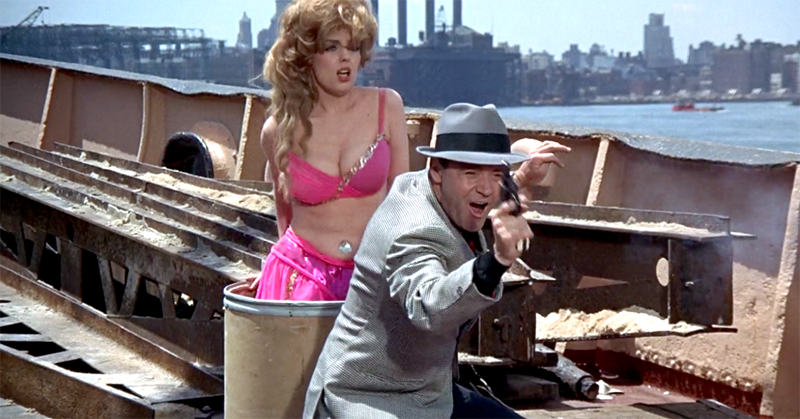
To this point, How to Murder Your Wife — released in 1965 — maintained a larger than life, absurdist comic tone (Terry-Thomas as the butler Charles repeatedly talks directly to the camera). Sure, all the men in it are sexist pigs, but the whole endeavor is so silly that I was enjoying so many gifted comic actors try and pull this thing off. Unfortunately, it’s at this point in the story when it starts to curdle.
Putting aside the idea that Stanley could be put on trial for a murder that there is zero evidence of, the whole trial sequence is pretty ghastly in its misogyny. Assuming he will be convicted, Stanley goes for broke and delivers a long speech about how that, if even he did kill his wife, it was justified because she made his life so miserable—because that’s what wives do, har de har har! The all-male jury feels sympathy for Stanley, declares him not guilty, and carries him off on their shoulders. My lord, who wrote this movie, Don Draper?
The scenes in the men’s club are pretty piggish, to be sure, but I found there was a whole whistling past the graveyard feel to them. Yes, these guys complain about their wives, but they’re presented as sad sacks who have everything but are still miserable. But I found the courtroom scene to be pretty loathsome, and I kept waiting for another turn that would shame all these guys for their retrograde ideas, but it never comes.
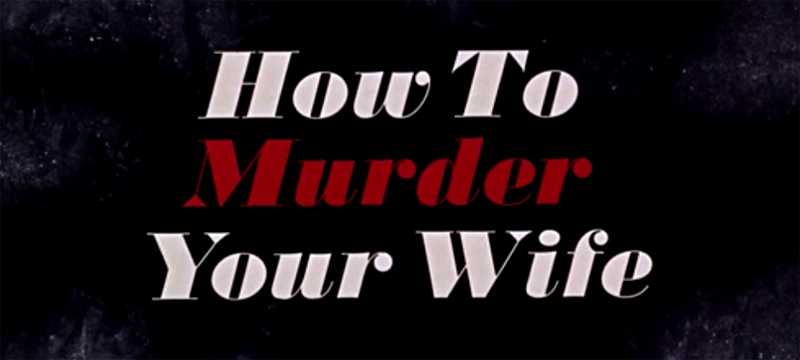
Jack Lemmon was such a marvelous comic actor that, if you want to be generous, you could say that his Stanley was merely telling the jury what it wanted to hear, and that he didn’t really mean any of it. In fact, not too long after he gets home, he finds his wife has returned, and he happily welcomes her back! Even Charles, who has resumed working for Stanley thinking he was single again, ends the film taking up with Stanley’s Italian mother-in-law, in a kind of “if you can’t beat ‘em, join ‘em” final shot. But that’s a generous reading.
The reason, of course, that we’re covering this movie at all for REEL RETRO CINEMA is the comic-strip angle. Originally, Bash Brannigan was to be drawn by the legendary Alex Toth, who whipped up about a dozen original strips that ran in The Hollywood Reporter and other outlets as promotion for the film. For reasons I was not able to determine, none of the strips are called Bash Brannigan, perhaps that was a late change. Nonetheless, they are, of course, simply gorgeous.
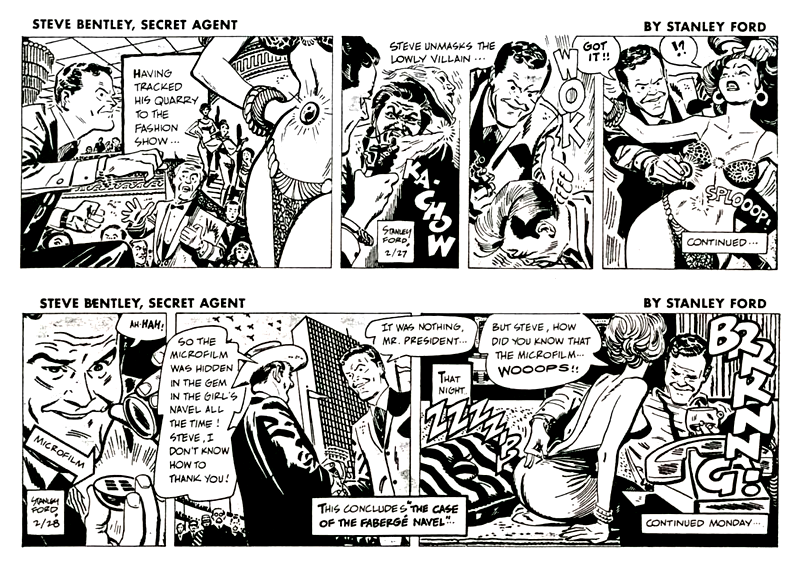
Not only was Toth supposed to provide the art, but he also was going to be Lemmon’s “stunt hand” when he is seen working on the strip in the movie itself. According to Mark Evanier, a problem arose when it was discovered that while Toth was left-handed, Lemmon was a righty. After some more backstage squabbling, Toth left the project and was replaced by Mel Keefer (Mac Divot, Perry Mason), who also delivered some top-notch comic art (though Toth’s art can still be seen, on the Bash Brannigan sweatshirt Lemmon wears while working).
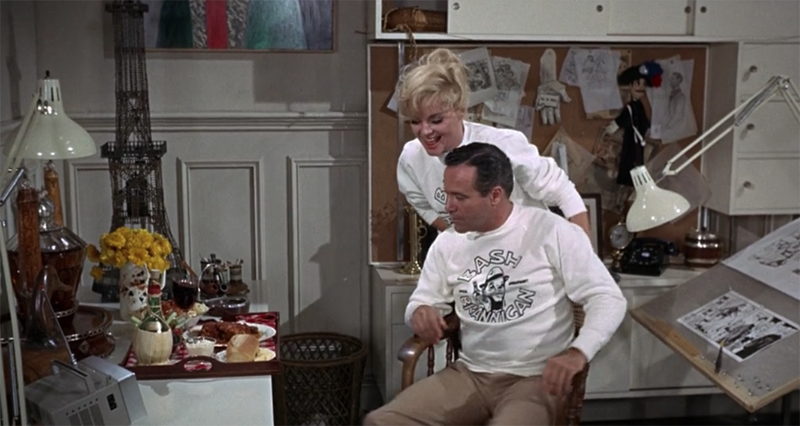
Director Richard Quine directed Lemmon in five other movies besides this one, and his films usually feature a goofy, upbeat comic tone. This one manages that, for a while (the music, by Batman-theme composer Neal Hefti, helps a little in that regard), but the third act needed another pass or two. Quine directed the comedy-fantasy Bell, Book, and Candle (which co-starred Lemmon), and I would have liked to see some of that more fanciful tone here, maybe a scene or two where we actually see the world of Bash Brannigan come to life.
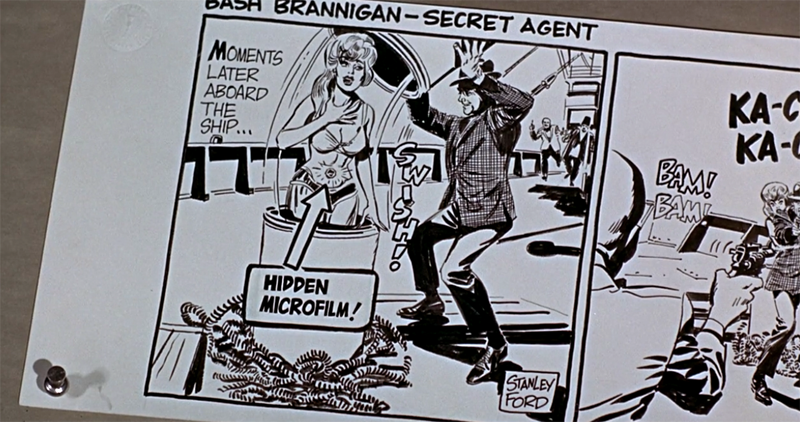
How To Murder Your Wife is filled to the brim with amazing character actors (the great Mary Wickes shows up briefly, as do Jack Albertson and Sidney Blackmer) and it’s fun, in a parallel universe sort of way, to watch how a comic strip artist is treated like he’s a king among men, a prince of the city. Is this what Gary Larson’s life was like?
One final thing worth noting—when did Hollywood screenwriters come up with the seemingly unshakable notion that comic-strip artists have the time, money, and inclination to shoot real-life dioramas as reference? This is a story beat in Condorman, too!
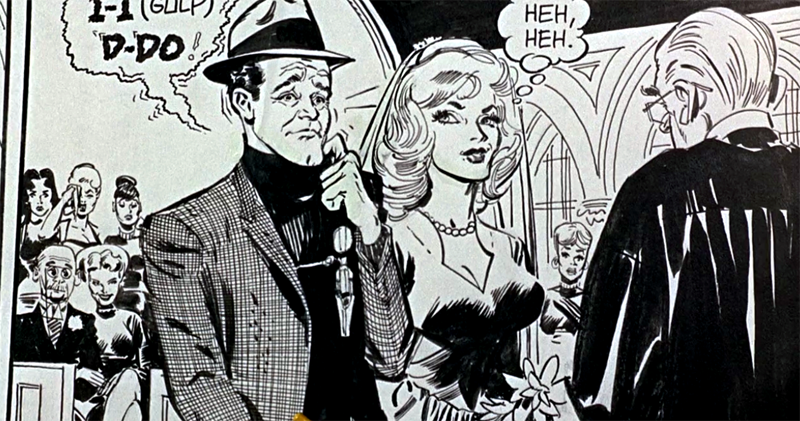
OK, one final final thing worth noting—most of the movies covered for RRC either come from comic books or eventually were turned into comic books. How to Murder Your Wife is the rarity in that it’s about someone working in the comics field. The only other example of that we’ve covered so far was 1981’s The Hand, which also featured a cartoonist who dreams of killing his wife. These guys are taking the word “deadline” way too seriously.
—
MORE
— THE HAND: When Michael Caine Met Barry Windsor-Smith – Sort Of. Click here.
— When Disney Failed Superheroes: 1981’s CONDORMAN. Click here.
—
ROB KELLY is a podcaster, writer and illustrator. He is the host/co-host of several shows on The Fire and Water Podcast Network, including Fade Out, TreasuryCast, For All Mankind, M*A*S*HCast and Pod Dylan.

March 5, 2023
I totally dig the Alex Toth art on these comic strips.
March 5, 2023
I love this movie, being a huge Jack Lemmon fan. Another film showcasing artists working in comics is Artists and Models, starring Dean Martin and Jerry Lewis. When I was a kid I was convinced that it was completely accurate as to what a comic artist’s life was like. Lol
March 19, 2025
I love this movie’s absurd satire. It’s so silly and ridiculous no one should see it as misogynistic. I’d love to see “How to murder your husband”